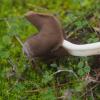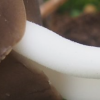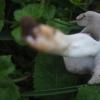
23-10-2024 17:27
Hi againThese tiny apothecia (100-200 µm) were gr

06-11-2024 20:07
• Macro and habitat suggest Hymenoscyphus s.l.,

04-09-2024 21:02
 Stephen Martin Mifsud
Stephen Martin Mifsud
I have found an interesting Xylaria growing on fal

06-11-2024 11:59
 Stephen Martin Mifsud
Stephen Martin Mifsud
I am trying to identify a Cheilymenia sp. using ke

05-11-2024 18:00
Karen PoulsenHello, Can anyone help with this one? On twigs o

05-11-2024 10:35
Juuso ÄikäsThese pale-yellow fruitbodies were growing on core

03-11-2024 17:36
• Macro and habitat suggest Hymenoscyphus s.l.,

04-11-2024 22:58
• Both Erysiphe and Phyllactinia species reporte
 Bonjour à tous, ma découverte du jour, une Helvelle dont l'allure me conduirait vers Helvella albella ou elastica. Qu'en pensez-vous ?
Bonjour à tous, ma découverte du jour, une Helvelle dont l'allure me conduirait vers Helvella albella ou elastica. Qu'en pensez-vous ?Biotope : zone herbeuse découverte calcaire, pins, chênes verts proche.
Chapeau brun. envers blanchâtre pubescent.
Stipe blanc rigide presque plat. Aspect lisse mais légèrement pubescent à la loupe.
Odeur nulle.
Caractéristique autre : hauteur totale 6 cm, exemplaire unique.

En zone méridionale, voir aussi H. panormitana.



